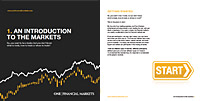

Asia FX muted before more Fed cues, yen on intervention watch
Investing.com -- Most Asian currencies rose slightly on Friday, recovering some recent losses as markets remained on edge ahead of a key U.S. inflation indicator, while weakness in the Japanese yen brewed speculation over government intervention.
Softer-than-expected Chinese purchasing managers’ index data presented more economic headwinds for Asia, as manufacturing activity in the region’s largest economy slowed for a third straight month.
The Chinese yuan was flat on Friday, but was trading at over seven-month lows to the dollar. The currency was also headed for a 2% loss in June.
Concerns over slowing Chinese growth kept most other Asian currencies trading in a tight range, with the South Korean won up 0.2%, while the Taiwan dollar traded sideways.
The Australian dollar rose 0.2% amid speculation that the Reserve Bank of Australia will hike rates next week to curb sticky inflation.
Westpac analysts said in a note that they expect a 25 basis point hike next week.
Japanese yen on intervention watch after recent losses
The yen traded flat on Friday after briefly sinking below the 145 level to the dollar. Recent weakness in the currency attracted a slew of verbal warnings from Japanese officials that they will act to ensure stability in the currency.
Analysts had pegged 145 as a point where the government could intervene. The government had last acted in October and November to curb weakness in the yen, after it sank to a more than 30-year low of over 150.
Data on Friday showed that inflation in Japan’s capital remained sticky through June, heralding a similar reading from nationwide inflation data due later in July. But despite sticky inflation, the Bank of Japan has offered no indications that it intends to tighten its ultra-loose policy.
Dollar steady ahead of PCE inflation data
Broader Asian currencies were muted as the dollar continued to dominate currency markets amid increasing bets on more rate hikes by the Federal Reserve.
The dollar index and dollar index futures moved little in Asian trade on Friday, after reaching two-week highs in overnight trade.
Data released on Thursday showed that the U.S. economy grew much more than initially thought in the first quarter, ramping up bets that the Fed will have enough headroom to keep raising interest rates.
This came after Fed Chair Jerome Powell reiterated the bank’s plans to raise rates at least two more times this year.
Focus is now on personal consumption expenditures price index data - the Fed’s preferred inflation gauge - due later in the day. The index is expected to have remained steady in May from the prior month, pressuring the Fed into keeping rates high to curb sticky inflation.
Begin trading today! Create an account by completing our form
Privacy Notice
At One Financial Markets we are committed to safeguarding your privacy.
Please see our Privacy Policy for details about what information is collected from you and why it is collected. We do not sell your information or use it other than as described in the Policy.
Please note that it is in our legitimate business interest to send you certain marketing emails from time to time. However, if you would prefer not to receive these you can opt-out by ticking the box below.
Alternatively, you can use the unsubscribe link at the bottom of the Demo account confirmation email or any subsequent emails we send.
By completing the form and downloading the platform you agree with the use of your personal information as detailed in the Policy.






